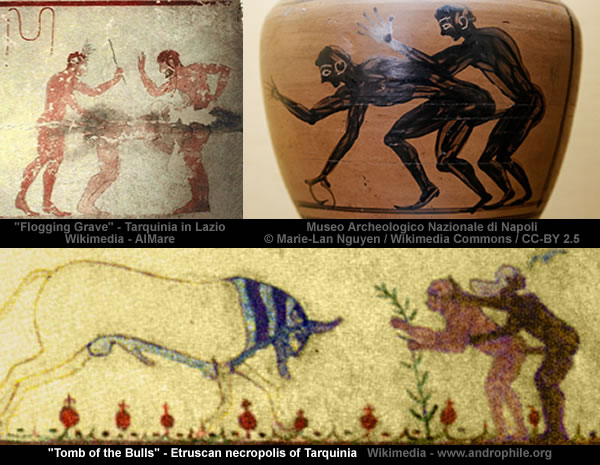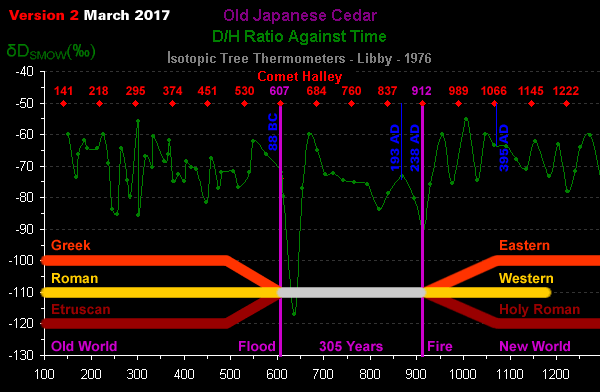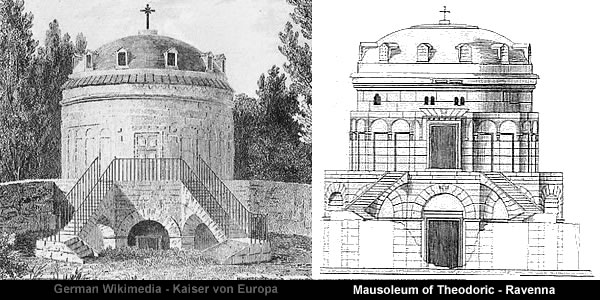Foreword
The mainstream has a pathological predilection to prioritise “cock-up before conspiracy”.
Hanlon’s razor is an aphorism expressed in various ways including
“Never attribute to malice that which is adequately explained by stupidity”
or
“Don’t assume bad intentions over neglect and misunderstanding.”It recommends a way of eliminating unlikely explanations for a phenomenon (a philosophical razor).
…
A common (and more laconic) British English variation, coined by Bernard Ingham, is the saying “cock-up before conspiracy“, deriving from this 1985 quotation:Many journalists have fallen for the conspiracy theory of government.
I do assure you that they would produce more accurate work if they adhered to the cock-up theory.https://en.wikipedia.org/wiki/Hanlon%27s_razor
cock up
(mildly taboo, slang, chiefly Britain, New Zealand)
To ruin (something) unintentionally; to screw up, mess up or fuck up.
Contrary to the mainstream preference this posting specifically places conspiracy before cock-up.
This prioritisation is driven by philosophical principles and the phrasing is explicitly euphemistic.
More specifically, this posting argues the established Etruscan Ecclesiastical Empire had a major word association problem when it tried to become respectable by preaching the virtues of love thy neighbour and turn the other cheek.
In other words:
This is a tale of a conspiracy to cover-up the cock-up in art, architecture, culture and history.
This is a tale that demonstrates Ancient History was re-written by the vicars.
Triple Point Convergence
The official multicultural narrative of the Italian peninsula during the 1st millennium BC [Before Catastrophe] finally produces one dominant cultural continuum:
Greek -> Etruscan -> Roman.
The peculiarity of this narrative is that the Greek, Etruscan and Roman narratives converge to the point where their styles are “essentially the same”.
Early Romans most likely learned stone masonry construction from their Etruscan neighbors.
Because Etruscan architecture had been strongly influenced by the Greeks, Rome’s early monumental structures used essentially the same Greek-style ashlar masonry construction: precisely cut stone blocks, assembled in horizontal courses without mortar , interconnected with iron clamps.
The Romans called this configuration opus quadratum , Latin for “squared work.”
Understanding Greek and Roman Technology
Professor Stephen Ressler – United States Military Academy at West Point
https://guidebookstgc.snagfilms.com/1132_GreekandRomanTech.pdf
Because of this peculiarity some observers believe the only difference between their “essentially the same” styles is in the type of stone employed.
Initially, the only significant difference between Roman opus quadratum and Greek ashlar masonry was the stone itself.
During the Roman Republic, Roman builders had little access to marble, so they built primarily with tufa, a locally available limestone.
Understanding Greek and Roman Technology
Professor Stephen Ressler – United States Military Academy at West Point
https://guidebookstgc.snagfilms.com/1132_GreekandRomanTech.pdf
The temporal convergence point for this cultural continuum is closely aligned with the Greek Termination Event in 88 BC and [so we are told] the final absorption of the Etruscan cities in [about] 100 BC.
The synthesis of this fabulous fusion at the convergence point is the glory known as Senātus Populusque Rōmānus [aka SPQR aka Senate and People of Rome] “from c. 80 BC onwards”.
SPQR is an initialism of a Latin phrase Senātus Populusque Rōmānus (“The Roman Senate and People”, or more freely as “The Senate and People of Rome“), referring to the government of the ancient Roman Republic, and used as an official emblem of the modern-day comune (municipality) of Rome.
…
The title’s date of establishment is unknown, but it first appears in inscriptions of the Late Republic, from c. 80 BC onwards.https://en.wikipedia.org/wiki/SPQR
The last Etruscan cities were formally absorbed by Rome around 100 BC.
https://en.wikipedia.org/wiki/Etruscan_civilization
Because these roof lugs weren’t chiselled-off it appears this Etruscan structure was being built when disaster struck at the Greek Termination Event around 88 BC.
See: https://malagabay.wordpress.com/2017/05/19/ravenna-revisited-mausoleum-of-theoderic-tragedy/
The reconciliation of the Roman Greece Splice suggests the crushing of the entire Greek peninsula in 88 BC is associated with the perihelion of Comet Halley in 607 CE…
See: https://malagabay.wordpress.com/2017/03/23/comet-halley-and-the-roman-time-line/
This very unlikely triple point convergence has all the hallmarks of a manipulation artefact where the threads of the historical narrative have been re-woven to construct a desired narrative – as in the long established radiocarbon calibration curve.
In many ways this 470 BC Pivot Point is the defining feature of the Irish Oaks Chronology and the consensus calibration curve that controls the radiocarbon calibration process.
Unsurprisingly, the IntCal13 Northern Hemisphere Atmospheric Radiocarbon Calibration Curve published in 2013 contains a remarkably similar Pivot Point at about 465 BC.
See: https://malagabay.wordpress.com/2017/04/05/deranged-dating-the-slanted-science/
And just like the radiocarbon calibration curve the official historical narrative includes many discordant, disjointed and duplicated defects.
Diocletian’s Palace
One of the more egregious aberrations is Diocletian’s Palace which is purported to have been built around 305 AD using building techniques the Romans are said to have abandoned [about] 300 years earlier following the introduction of bricks and mortar.
Diocletian, born Diocles (244–312), was a Roman emperor from 284 to 305.
https://en.wikipedia.org/wiki/Diocletian
Diocletian built the massive palace in preparation for his retirement on 1 May 305 AD.
…
After the Middle Ages the palace was virtually unknown in the rest of Europe until the Scottish neo-classical architect Robert Adam had the ruins surveyed and, with the aid of French artist and antiquary Charles-Louis Clérisseau and several draughtsmen, published Ruins of the Palace of the Emperor Diocletian at Spalatro in Dalmatia (London, 1764).https://en.wikipedia.org/wiki/Diocletian%27s_Palace
In the West the tradition of stone building came to an end with Diocletian’s palace at Split.
Age of Spirituality: Late Antique and Early Christian Art, Third to Seventh Century
Editor: Kurt Weitzmann – The Metropolitan Museum of Art, New York – 1979
http://www.metmuseum.org/art/metpublications/age_of_spirituality_late_antique_and_early_christian_art_third_to_seventh_centuryDevelopment began under Augustus, using techniques developed by the Greeks, who had been using fired bricks much longer, and the earliest dated building in Rome to make use of fired brick is the Theatre of Marcellus, completed in 13 BC.
https://en.wikipedia.org/wiki/Roman_brick
Vitruvius, writing around 25 BC in his Ten Books on Architecture, distinguished types of aggregate appropriate for the preparation of lime mortars.
Late Antiquity Repeaters
Diocletian is deemed the “most radical” of the “repeaters” where “everything” is 300 years adrift.
Diocletian is seen as the most radical of all the Late Antiquity repeaters of everything 300 years out of fashion.
His obsessive passion for tradition is second to none.
He becomes the model for everybody, actually for countless millions, because not only the leading personages but regular citizens, too, when buying fibulae, glass beads, or houses and their interiors, would not deviate from styles that were popular 300 year earlier.
No artist would have dared to portrait Diocletian in a 4th c. manner. It was 1st c. or nothing.
Late Hellenistic elements of the late 1st c. BCE were okay but anything later than early 1st c. CE led into deep water – or so mainstream history would have us believe.
Diocletian’s private mansion at Split is a throwback to the style of the castra of the Late Republic, dated 300 years earlier…
…
Yet, what even the most hardened historians cannot comprehend is Diocletian’s decision to deprive his cavalry of the stirrup.His horsemen are sent into battle against armies taking advantage of this military tool since the late 2nd century CE, e.g. the Kushan Empire east of Rome’s Parthian arch-enemy.
Yet, if Augustus could wage battle without knowledge of the stirrup against non-stirrup armies Diocletian could, at last, not only pay homage to his idol but, at the same time, outperform him by perfectly knowing the stirrup, and, still, sending his horsemen against superior stirrup-forces.
How sweet to accept defeat if it is suffered in the name of love for Rome’s finest traditions.
Because it sounds so bizarre, mainstream scholars might emphasize, we cannot help but believe it.
But, yes, we still do not have his anti-stirrup-order.
I beg to differ.
Diocletain was not insane but 1st c. in textbook chronology, and 8th c. in stratigraphy based history.
Rome’s Imperial Stratigraphy Belongs To The 8th-10th Century Period
Q-Mag – Gunnar Heinsohn – 22 June 2014
http://www.q-mag.org/gunnar-heinsohns-answer-to-trevor-palmer.html
Andddd It’s Gone
The curious aspect of the 300 year Diocletian Time Warp is that it’s virtually identical to the 305 year gap between the Greek Termination Event and the Heinsohn Horizon.
Based upon the mud that reached the height of the ground floor door lintel of the Mausoleum of Theoderic in Ravenna it seems this event was characterised by earthquakes and flooding.
See: https://malagabay.wordpress.com/2017/05/24/ravenna-revisited-greek-termination-event/
The more likely explanation is that these tall tales from the monasteries were designed to explain away the natural disaster that was the Roman Termination Event in 912 CE – an event that most decidedly was associated with “heat, fire and dust”.
See: https://malagabay.wordpress.com/2017/05/17/ravenna-revisited-mausoleum-of-theoderic-farce/
More specifically:
The 300 year Diocletian Time Warp shuffles the beginning of Diocletian’s reign backwards in time from 284 AD to 16 BC i.e. 72 years after the Greek Termination Event.
However, given that his palace was “virtually unknown” until it was rediscovered in 1764 it’s very likely Diocletian’s Palace was overwhelmed at the Greek Termination Event.
After the Middle Ages the palace was virtually unknown in the rest of Europe until the Scottish neo-classical architect Robert Adam had the ruins surveyed and, with the aid of French artist and antiquary Charles-Louis Clérisseau and several draughtsmen, published Ruins of the Palace of the Emperor Diocletian at Spalatro in Dalmatia (London, 1764).
In other words:
The Diocletian Time Warp reveals the Roman Empire ended before it even began.
The Roman Empire was fabricated by re-weaving the threads of history.
This ludicrous situation has arisen because the Etruscan Ecclesiastical Empire [aided and abetted by their Academic Acolytes] created for themselves an impressive [but totally fictional] provenance by stitching together a wholly incoherent historical fabric designed to justify their existence and further their objectives.
What Is Known
Sadly, very little because the official narrative is virtually unverifiable.
The documentary evidence was fabricated by the Etruscan Ecclesiastical Empire and the artefact evidence has been compliantly filtered by the Academic Acolytes.
See: https://malagabay.wordpress.com/2015/07/01/the-heinsohn-horizon-the-academic-abyss/
What Has Been Observed
At the time of the Greek Termination Event the Etruscans where still constructing their fine upstanding monuments in [both] Rome and Ravenna using [both] brick and stone.
See: https://malagabay.wordpress.com/2017/05/19/ravenna-revisited-mausoleum-of-theoderic-tragedy/
The Mausoleum of Helena is an ancient building in Rome, Italy, located on the Via Casilina, corresponding to the 3rd mile of the ancient Via Labicana. It was built by the Roman emperor Constantine I between 326 and 330, originally as a tomb for himself, but later assigned to his mother, Helena, who died in 328.
https://en.wikipedia.org/wiki/Mausoleum_of_Helena
See: https://malagabay.wordpress.com/2017/05/24/ravenna-revisited-greek-termination-event/
What Can Be Inferred
The Greek-Etruscan cultural continuum appears to have developed in lock-step because at the time of the Greek Termination Event the people of Rome were conversing in Greek.
However, whilst the academics are busy working on their Latin character set the “educated Roman citizens” are still busy conversing in Greek whilst the “first Popes” were apparently still writing in Greek during the 2nd or 3rd centuries AD.
In other words:
Romans were speaking and writing Greek until Rome collapsed at the Heinsohn Horizon.
However, those frightfully clever chaps in academia overcame this catastrophic calamity by inventing Vulgar Latin which [so they say] was a spoken language with “no official orthography”.
See: https://malagabay.wordpress.com/2015/07/05/latin-line-languages/
Similar to most modern Greek dialects, Pontic Greek is mainly derived from Koine Greek; spoken in the Hellenestic and Roman times between 4th century BC and 4th century AD.
Whatever came before the Greek Termination Event had a power base in the Balkans.
Recent genetic studies as part of the Genetic history of Europe on the y-chromosomes of men in Abergele have revealed that there is a significant percentage of E1b1b1a2 haplogroup in Abergele.
…
This genetic marker is found at its highest concentrations in the Balkans at over 40% in areas, but at much lower percentages in Northern Europe at less than 5%.The reason for drastically higher levels of E1b1b in Abergele is most likely due to the heavy Roman Army presence in Abergele as most of the Roman Soldiers that came to Britain did not come from Italy, rather from other parts of the Roman Empire.
Other notable levels of genetic marker E-V13 have been found in a few other towns in Britain that were known to have had a heavy Roman presence nearly 2000 years ago.
The Fake First Millennium
When the Etruscan Ecclesiastical Empire re-emerged in Western Europe at the beginning of the 2nd millennium they promptly began the long and arduous process of re-inventing their religion, re-branding their monuments, re-educating their flock and re-building their empire.
The re-emergent Etruscan Ecclesiastical Empire re-invented itself as a monocultural, monotheist sect because their Old World Gods “turned against them” and multiculturalism.
As the difficult third century progressed, Roman began to believe that their gods had turned against them.
The Fall of the Roman Empire (Revised Edition) – Rita J. Marke – 2008
https://books.google.es/books?id=qpKXAgAAQBAJ&pg=PA59Monotheism has been defined as the belief in the existence of only one god that created the world, is all-powerful and interferes in the world.
https://en.wikipedia.org/wiki/Monotheism
Monoculture is the agricultural practice of producing or growing a single crop, plant, or livestock species, variety, or breed in a field or farming system at a time.
No doubt the re-incarnated Etruscan Ecclesiastical Empire got a kick out of blaming the population for invoking “God’s wrath” [by worshipping the wrong gods] and by threatening them with “fire and brimstone” [real and imaginary] if they failed to convert to monotheism [or pay the tithe].
Fire and brimstone is an idiomatic expression of signs of God’s wrath in the Hebrew Bible (Old Testament) and the New Testament. In the Bible, they often appear in reference to the fate of the unfaithful.
“Brimstone”, the archaic name for sulfur, evokes the acrid odor of volcanic activity.
The term is also used, sometimes pejoratively, to describe a style of Christian preaching that uses vivid descriptions of judgement and eternal damnation to encourage repentance.
As the Etruscan Ecclesiastical Empire became more established they tried to become respectable by expurgating the records and constructing a glorious 1,000 year long provenance for themselves i.e. the 1st millennium AD.
This manufactured 1,000 year provenance includes 700 Phantom Years [as identified by Gunnar Heinsohn] plus an additional 300 years of re-woven history to cover the [predominantly] decimated void between the Greek Termination Event and the Heinsohn Horizon.
Wrecked Metropoles of The 1st Millennium CE: A Comparison
Gunnar Heinsohn – 1 May 2016
http://www.q-mag.org/_iserv/dlfiles/dl.php?ddl=gunnar-wrecked-metropoles-1st-millennium-comparison-heinsohn-01-may-2016-1.pdf
Since those early days the Academic Acolytes have emulated the Etruscan Ecclesiastical Empire by pushing the boundaries of creative writing even further back in time.
As it was in the beginning, is now, and ever shall be: creative writing without end.
The really tragic aspect of this fiasco is that it’s still peddled by Academic Acolytes [who know better] and regurgitated by Anaemic Academics who have no [legitimate] excuse for not knowing better…
FOOTNOTE
The “[predominantly] decimated void” between the Greek Termination Event and the Heinsohn Horizon requires some explanation.
The evidence suggests the Greek Termination Event was a very severe event that devastated many urban centres with any survivors struggling to survive amidst the wreckage.
Since then the palace has been occupied, with residents making their homes and businesses within the palace basement and directly in its walls.
Today many restaurants and shops, and some homes, can still be found within the walls.
Furthermore, the series of close encounters with Comet Halley between 605 and 1066 CE meant that any recovery was regularly thrown into reverse.
For example:
After the last close encounter with Comet Halley in 1066 CE it took about 20 years for the Etruscan Ecclesiastical Empire to establish a semblance of control over England and Wales.
Domesday Book (“Book of Winchester”) is a manuscript record of the “Great Survey” of much of England and parts of Wales completed in 1086 by order of King William the Conqueror.
…
It was written in Medieval Latin, was highly abbreviated, and included some vernacular native terms without Latin equivalents.The survey’s main purpose was to determine what taxes had been owed during the reign of King Edward the Confessor, which allowed William to reassert the rights of the Crown and assess where power lay after a wholesale redistribution of land following the Norman conquest.
https://en.wikipedia.org/wiki/Domesday_Book
Medieval Latin had an enlarged vocabulary, which freely borrowed from other sources.
It was heavily influenced by the language of the Vulgate, which contained many peculiarities alien to Classical Latin that resulted from a more or less direct translation from Greek and Hebrew; the peculiarities mirrored the original not only in its vocabulary but also in its grammar and syntax.
Greek provided much of the technical vocabulary of Christianity.
The various Germanic languages spoken by the Germanic tribes, who invaded southern Europe, were also major sources of new words.


















Essentially written ancient history, and recent history for that matter, is more or less fabricated to fit preconceptions than detailing objective truth, and thus the results of the efforts of dogmatic minds to make sense of the past using their limited knowledge. Post modernism has a long pedigree indeed.
Which suggests Velikovsky’s reconstructions, and subsequent ones, are problematic as GH has demonstrated. I see the same mindset also set upon geology during the 19th century AD.
Pingback: The Heinsohn Horizon and The Parting of the Red Sea | MalagaBay
Pingback: The Cock-Up of the 3rd Century | MalagaBay
Pingback: Enigmatic Egypt: Roman Ruination – Red Sea Hills | MalagaBay